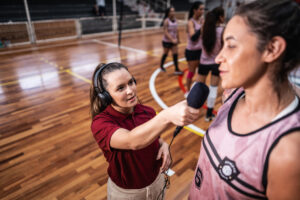6 ways to use cultural levers to embed DE&I in your organization’s workforce dynamics
Three DE&I specialists discuss their companies’ journeys to diversity and inclusion, and what they’ve learned along the way.

One of the big DE&I challenges in nearly every organization is moving from well-meaning but ineffective talk to action, and then from limited standalone short-term “10-steps”-type programs to ongoing, comprehensive organizational change.
That was the topic of a roundtable session at Ragan’s recent Diversity, Equity and Inclusion conference, held virtually on May 19th.
Employees and customers are increasingly demanding impactful change, and organizations conversely, can’t sit on the sidelines. That was the core message of the session, entitled “Cultural Levers: Embedding DEI into the Organization to Make an Authentic and Meaningful Impact.”
Three speakers took turns in an innovative round-robin format asking their fellow panelists questions around what can be done to ensure that DEI strategies will be successfully implemented, and the sustained to make a lasting difference. The speakers were:
- Nicole McCann-Davis, Director, Communications and Multicultural Affairs, Seasons Healthcare Management
- LaTricia Hill-Chandler, Diversity, Equity and Inclusion Officer, Arvest Bank
- Janet Rizzuto, Director of Diversity, Equity & Inclusion – The Americas, Warner Music Group, Corp
All three began by stressing the importance of buy-in from an organization’s leadership team. “Without buy-in from the leadership team, that becomes a consistent barrier,” McCann-Davis notes, though Chandler added that “buy-in” is open to interpretation. “It means so much to different people,” she says. “Once people are self-educated and hold themselves accountable, that’s one of the solutions.”

The panel discussed ways to build the positive employee experience. The DE&I team at Warner Music Group is new, in place less than a year, Rizzuto said, so it initiated an extensive listening campaign. We started speaking to leaders, listening to what individuals needed,” she says. “Then we conducted an inclusion survey. We’re in that process right now, but we had a pretty long runway leading up to it, and now we’ll look to begin activations that will produce those outcomes.”
McCann-Davis said Seasons Healthcare Management’s approach includes internal education to ensure staff is aware and becoming more culturally sensitive. It also includes recruiting staff that reflects the communities the company serves. And it includes engaging every team, across the board. “You can’t put DE&I in one bucket, and just say it belongs to HR,” she says. “Our managers are engrained in the strategic plans across the board. Those are the things we use to ensure our employees have a positive experience. Most important is making sure we’re being consistent. It can’t be a one-and-done. Let people know this is an important part of who we are as an organization.”
Hill-Chandler suggests establishing level-setting goals and definitions. “My program is only two years old,” she says. “Let’s set the tone, let’s set expectations and build from there.”

Rizzuto says Warner Music Group is using a DE&I maturity model to understand where it stands as an organization. It doesn’t want to find itself in a situation where it’s trying to build an employee experience but doesn’t have the infrastructure to do it.
Similarly, McCann-Davis notes that DE&I initiatives are not always been given the resources that other programs get. “This is an opportunity for us to say, ‘Let’s talk about that,’” she says. Seasons doesn’t have a team right now. “ We have been able to accomplish a lot over the last five years,” she says. “We have frontline employees who are all involved in these dialogues, and we are able to take the experiences we are hearing from the front lines to create and impact policies.”
At Warner Music Group, the company’s new head of diversity and inclusion said there were three things he needed, Rizzuto says. “He said, ‘I need to report to the CEO—I need to be in the C suite, I need a team, and I need money.’ We’ve created our own DE&I organization. Our ERGs are also an important role.”

A final question was around DE&I communications. When Hill-Chandler started at her job at Arvest, she said, “One goal was to connect our internal experts with our external experts. We have to be mindful we have created both internal and external comms strategies.”
Now she and her associates are conducting virtual road shows, and meeting regularly with the social media teams. They started a newsletter that features, among other things, “DE&I Gladiators”—highlighting colleagues.
In the end, notes McCann-Davis, DE&I shouldn’t feel like a mountain that must always be climbed. “We have to be able to tell stories,” she says. “People react to storytelling. We celebrate the wins and the milestones. It’s important that we’re showing work is getting done.”






